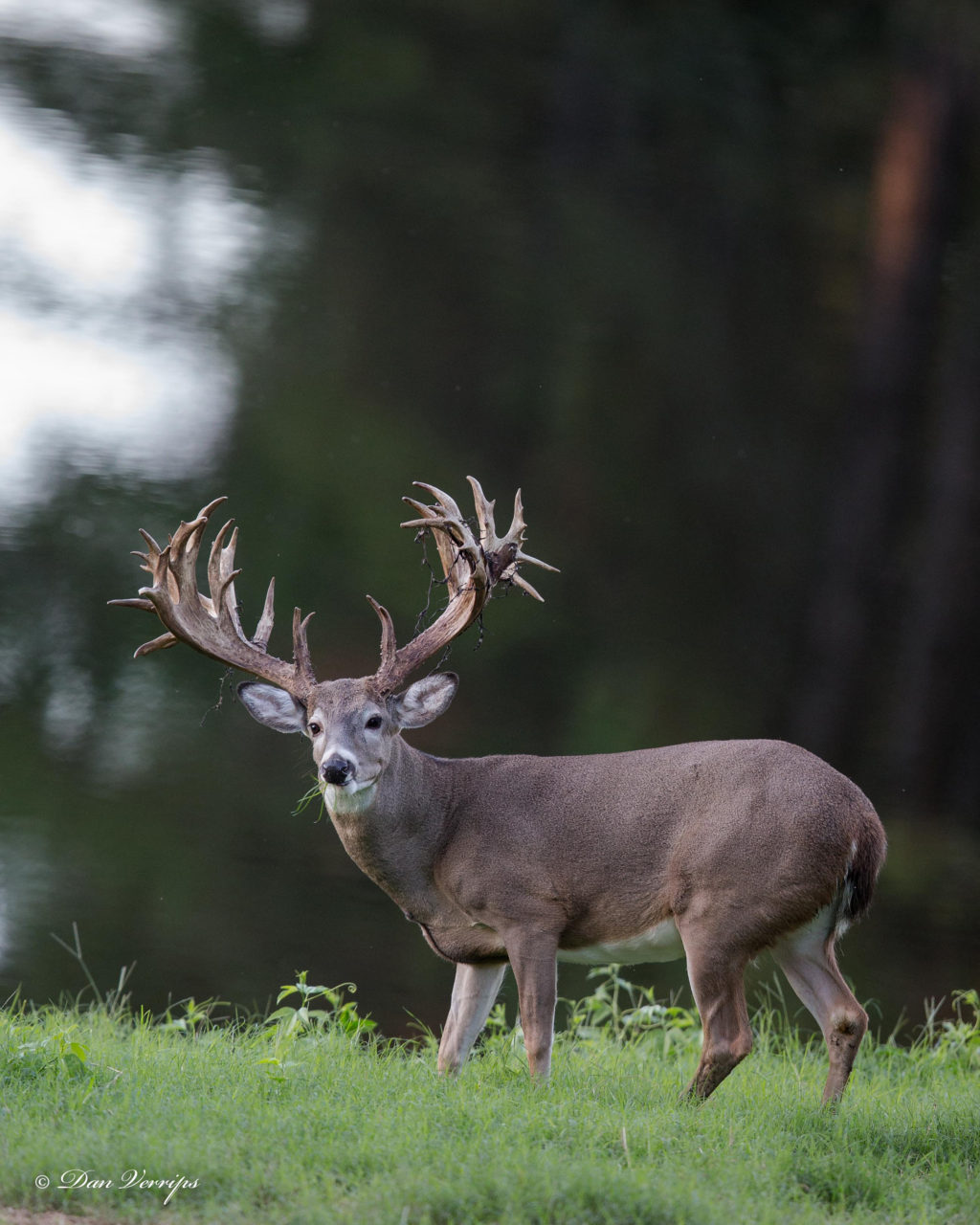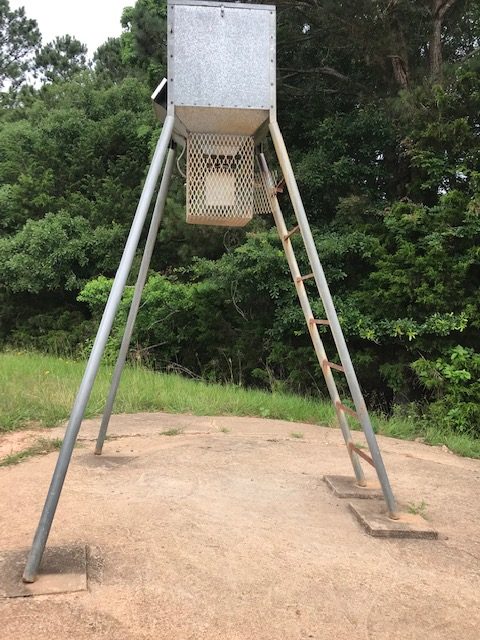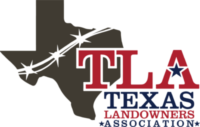
What do Deer Eat? Deer Diets Explained
Ever wonder exactly what those deer are eating all day long while they’re out doing their thing?
In this article I’ll give a direct answer to White-tailed Deer diets overall AND break down what they’re eating in different regions of Texas.
What you’ll find out in this article
- What White-Tailed Deer Eat
- Protein Requirements for White-Tailed Deer
- Protein Requirements for Antler Growth in White-Tailed Deer
- How Much Deer Need to Eat
- Supplemental Feeding Options for White-Tailed Deer
- Deer Diets in the Texas Hill Country
- Deer Diets in the Cross Timbers & Prairies of Texas
- Deer Diets in South Texas
- Deer Diets in East Texas
- UNUSUAL THINGS WHITE-TAILED DEER EAT
What Do Deer Eat?
White-tailed deer eat a combination of forbs, browse, and some grass. They’ll also eat mast (Nuts), fungus, lichens, as well as some very unusual items I mention below. The percentage of each of these in their diet varies greatly upon the time of year and availability of each in their habitat. Keep reading if you want the full breakdown!
| Deer Food Type | Percent of Annual Diet |
| Browse | 30-50% |
| Forbs | 25-50% |
| Mast | 5-20% |
| Grass | <10% |
- Browse – 30-50% of Annual Diet. Fresh soft growth of stems and leaves growing from brush and trees.
- Forbs – 25-50% of Annual Diet. These are small herbaceous (not woody) plants often referred to as weeds by landowners. Everything from wildflowers to thistles.
- Mast – 5 – 20% of Annual Diet. The botanical name for nuts, seeds, and fruits of trees and shrubs.
- Grass – <10% of Annual Diet
White-tailed Deer Diet –
White-tailed Deer are browsers, meaning they browse for food as they move along throughout their day. Deer will opportunistically eat from any available food source they see during their daily activities.
The majority of their diets come from forbs and browse, which together tend to make up to 80% of their diet.
Browse from small shrubs and trees is the most reliable year round food source for White-Tailed Deer. Forbs and mast on the other hand are only available seasonally and in some years mast may not be available at all.
White-tailed Deer are ruminants but unlike other ruminants (Cattle, Sheep, and Goats) they are not efficient at digesting grass. In fact, it’s often said that a deer can die of starvation with a belly full of grass. This is why grass makes up such a small part of their annual diet, generally less than 5%.
According to an article by Texas A&M Agrilife Extension, the grasses that deer will eat tend to be ones that are rapidly degraded in the rumen, such as small grains, ryegrass, and some native species. This is why you will often hear of landowners planting rygrass, oats, wheat, and barley in food plots.
These grasses are also common in the famous food plot mixes. It’s thought however that these grasses in food plot mixtures are often planted more as bait rather than providing supplemental nutrition.
Deer are opportunistic and will take on additional nutrition wherever they can find it. This includes gardens, crops, and orchards. One study conducted by (Dillard et al) in the Cross Timbers Area of Texas showed that crops can make up almost 7% of their diet. At the end of this article I list 6 things that you’d never expect a deer to eat.
Protein Requirements of White-tailed Deer
You’ve probably heard that you need to make sure deer in your area are getting enough protein. Many larger ranches will provide supplemental protein for their deer heard from broadcast and free choice feeders.

So how much protein do deer need?
White-tailed deer need 6-22% protein depending on the stage of life and activity level. Deer use protein for reproduction, lactation, maintaining a normal metabolism, and to produce those beautiful antlers.
The University of Missouri has done extensive studies on this and has published the findings below.
Adult deer require 6-10% protein to maintain a normal metabolism. Yearlings, on the other hand, require 12% for normal body maintenance and growth. As you can probably imagine, the highest protein requirements come from growing fawns (16-20%), does in late pregnancy (11-15%), and does during lactation (14-22%).

Read the full article right where these findings are published HERE.
The take away from this research in my opinion is that protein requirements for deer to thrive are double the amount required for them to maintain weight AND these requirements need to be met essentially year round.
Assuming you are wanting to maintain a thriving heard you’ll need to make sure these higher protein requirements are met year round; in the winter for lactating does, spring for antler growth, summer for late pregnancy, and fall for lactation and excellent fawn growth.
Protein and Antler Growth on White-Tailed Deer
Numerous studies have shown that protein levels have a dramatic impact on antler growth.
One such study (Harmel et al, Texas Parks & Wildlife) reared several buck fawns in separate pens strictly controlling their protein intake over several years. The study showed that 2 year old bucks who were fed a diet composed of 8% protein exhibited half of the antler mass as 2 year old bucks who were fed a diet of 16% protein.
I always assumed protein consumption could greatly influence antler growth but I had no idea going from a 8% to a 16% protein diet would DOUBLE antler size among young bucks.
At 4 years of age there was an average disparity of 20 inches of antler size between the bucks feed the 8% protein diet and those fed the 16% protein diet.
The antlers of a White-tailed Deer buck consist of about 45% protein so it’s no surprise that protein intake has such a dramatic impact on antler growth. Since protein is such an important part of their physiological needs, bucks will prioritize protein for metabolism and body maintenance if overall protein intake is not enough to fuel both body maintenance AND antler growth.
How Much Do Deer Eat?
A White-Tailed Deer needs to eat 2% of its body mass (dry forage weight, see definition next paragraph) every day with a minimum protein content of 6% in order to just MAINTAIN muscle. This is the minimum threshold for a deer to maintain weight but it will not suffice for breeding purposes or lactation.
Dry forage weight is the amount all of the consumed forage consumed would weigh if it was completely dried out. Think about how much grass weighs right when it’s cut vs how much it weighs as hay.
For reproduction and breeding purposes a deer requires 3-5% of it’s body mass every day with a protein concentration of 12-16%. In his article, Key Food Plants for Deer in South Texas, Steve Nelle mentions that a White-tail needs 3.5lbs of dry forage weight/day or 1,300lbs / year containing 16% protein content. A deer that is not consuming this amount of nutrition will not achieve its optimal growth or reproduction.
Supplemental Feeding White-Tailed Deer
As a White-tailed Deer manager, it’s always most important to manage the habitat first. It’s a critical first step to ensure that the deer on your property have enough cover, adequate water distribution, and enough nutrition to prosper. For more information on this subject check our article written by Dr. James Kroll called “Plan for managing White-Tailed Deer.
At times may be necessary to provide a supplement to what the natural habitat provides. Periods of prolonged drought can have dire consequences on white-tailed populations which can be seen in poor body weights and a low fawn recruitment.
During these times there are a few options for providing supplemental nutrition.
Supplemental Feeding Options for White-tailed Deer
Food Plots
Food plots are like miniature farm fields that are designed specifically to “supplement” a deer’s diet. Food plots should be planted in the spring and provide a nutritional supplement for deer during the hot and dry summer months as well as in the fall to provide extra nutrition during the winter months.
For even more information about White-Tailed Deer Food Plots, check out our comprehensive article written by Dr. James Kroll, Best Article about Food Plots for White-tailed Deer Ever!
We also have a great article about the Best Food Plot Options for Deer in East Texas!
I typically recommend planting more than one species in a plot at a time. An intensive white-tail management strategy should dedicate 3-5% of land area to food plots.
I won’t go into the details of food plots in this article as there is FAR too much to cover but I’ve linked to several articles we have on food plots below.
Check out White-tailed Deer Food Plots – Not Another Food Plot Article
Check out White-tailed Deer Food Plots for Central Texas
Supplemental Protein Pellets
In some areas food plots may not be possible or feasible. For example, in west Texas food plots are almost impossible to grow without irrigation. In these cases it may be better to offer supplemental nutrition via protein pellets.
I won’t cover these in detail either as there is too much to cover on this topic for this article, but I have provided additional resources below.
http://wildlife.tamu.edu/files/2010/05/Supplemental-Forage-Management-for-East-Texas-White-tails.pdf
Hill Country White-Tailed Deer Diet
The Texas Hill Country boasts some of the highest populations of White-tailed deer in the country. According to Texas Parks and Wildlife, counties such as Mason, Gillespie, and Llano deer populations can be as dense as 1 deer for every 2-3 acres. This is the highest density of White-Tailed Deer in the nation.
For a more comprehensive look at White-tailed deer populations in Texas, check out this article How many deer in Texas?
According to several articles I’ve seen, deer in the Texas Hill Country tend to eat a slightly higher volume of grass (varies from 7-14% seasonally) than deer in other parts of the country (generally less than 7%).
Hill Country White-tailed deer dine mostly browse on an annual basis. Their favorite species being Live Oak, Mistletoe, Persimmon, Greenbriar, and Honeysuckles.
However, in the spring, when there is a higher abundance of forbs and fresh young grass, deer will focus on using the available growth on these two groups as an opportunity for additional nourishment.

The graphic above shows that deer in the Texas Hill Country seem to have a larger preference for grass than deer in other parts of the country. Check out the source of the graphic called “White-tailed Deer Browse Preferences for South Texas and the Edwards Plateau“.

As you can see from the graphic above, White-tailed Deer in the Texas Hill country eat a large combination of species including; LiveOak, Mistletoe, Persimmon, Mesquite, Cedar, Doveweed, Sida, Orange zexmania, Bladderwort, and a myriad of other things.
I’ve provided a more comprehensive list of plant species eaten by Texas Hill Country White-tailed deer below.
Browse Preferences of White-tailed Deer in the Texas Hill Country
- Texas Oak
- Post Oak
- Cedar
- Blackjack Oak
- Hawthorn
- White Shin Oak
- Elm
- Hackberry
- Texas Kidneywood
- Greenbriar
- Liveoak
- Evergreen Sumac
- Mistletoe
- White Honeysuckle
Forb Preferences of White-tailed Deer in the Texas Hill Country
- Plantains
- Spiderwort
- Evening Primrose
- Burclover
- Texas Filaree
- Lambs-Quarters
- Dayflower
- Velvet Bundleflower
- Knotweed
- Mat Euphorbia
- Leaf-flower
South Texas White-Tailed Deer Diet
https://tpwd.texas.gov/publications/pwdpubs/media/pwd_bk_w7000_1675_07_11.pdf
South Texas is over 20 Million Acres (1 Million of those being the King Ranch) and spans over 29 counties. These rangelands vary in rainfall from 22-36″ annually with the area getting dryer as you move west.
South Texas is one of the GOLD standards for deer production. So why is this such a phenomenon? I mean, it’s dry, scrubby, and everything down there either has thorns, fangs, or venom. The truth is though that many of those thorny brush species offer year round browsing and an excellent protein content.
In addition to providing excellent nutrition, species like Mesquite, White brush, Guajillo, Granjeno, and Brazil provide excellent cover for deer. These brush species also play a key role in the establishment of the forbs and grasses that consist of the other portion of the deer’s diet.
If you’re interested in finding more information about wildlife in South Texas you will love the Caesar Kleberg Wildlife Research Institute. There are a TON of amazing resources for you there!
Browse Preferences of White-Tailed Deer in South Texas
- Chomonque
- Elbowbush
- Fourwing Saltbush
- Ephedra
- Kidneywood
- Guajillo
- Prickly Pear
- Lime Prickly Ash
Forb Preferences of White-Tailed Deer in South Texas
- Bush Sunflower
- Orange Zexmania
- Velvet Bundleflower
- Talloweed
- Deer Vetch
- Filaree
- Wild Mustard
- Winecup
- Sleepy Daisy
- Verbena
Cross Timbers White-Tailed Deer Diet

The Cross Timbers and Prairies Region of Texas represents over 26,000 square miles. The region lies between East of Abilene and West Dallas, and from Austin North to the Red River and averages between 24-36″ of rainfall annually.
I found an amazing article that goes into full detail about deer diets in this area, it’s called White-Tailed Deer Food Habits & Preferences of the Cross Timbers and Prairies Regions of Texas.
The authors show that browse fluctuates between 30-50% of their diet seasonaly, Mast fluctuates between 12-32%, and forbs can vary from 3-43% depending on the season.
10 Most Important Plants for White-Tailed Deer in the Cross Timbers and Prairie Region of Texas
- Oak
- Skunkbush
- Prickly Pear Fruit
- Mesquite Beans
- Wild Mercury
- Deer Vetch
- Common Greenbriar
- Mistletoe
- Wheat/Oats
- Cedar Elm
East Texas White-Tailed Deer Diet
East Texas is composed of 2 major ecological regions: the Piney Woods & Post Oak Savannah. Soils are predominately sandy across the region (exceptions of bottomlands) and the area gets from 35-55″ of rainfall annually.
According to an article by Billy Higginbotham called Conservation and Management of White-Tailed Deer: an East Texas Perspective, East Texas Deer habitat is thought to have a carrying capacity of about 8 acres / deer. However, in order to maximize the production of a population it’s often best to utilize half of this capacity. Unfortunately, since it’s difficult to see enough deer to harvest at 1 deer / 16 acres, managers in East Texas often go for a density of 1 deer / 12 acres.
As with other regions in Texas, there have been several comprehensive studies on the diet of deer in East Texas. After reading several of them I’ve listed the most common species of preferred browse below.
Browse Preferences of White-Tailed Deer in East Texas
- Rusty blackhaw
- American beautyberry
- Carolina jessamine
- Blackberry
- Japanese Honeysuckle
- Starjasmine
- Red mulberry
- Saw greenbrier
- Cat greenbrier
- Trumpetcreeper
- Bois d’arc
If you’re curious about what some of these species look like check out this publication by Texas Parks & Wildlife.
Unusual Things White-Tailed Deer Eat
We’ve done a good job covering the typical deer diet, but there are some very unusual things that deer eat that I’m sure you never expected. Here are a few items deer have been documented eating:
- Tree bark
- Mice
- Baby birds – https://youtu.be/2q91dUtDYkU
- Young Squirrels – https://youtu.be/SAWi1bgV4P8
- Quail Eggs
- Small fish that have washed up onshore
Conclusion
I hope you found this article helpful. Please share it with other people who mind find it useful. To find out more about White-tailed Deer, Wildlife Management, and more check out some of our other articles right here! Also, check out my youtube channel LandOwner TV here.
Resources & Citations
- What Do Deer Eat and Why – Texas Agrilife Extension
- White-Tailed Deer Food Habits and Preferences in the Cross Timbers and Prairies Region of Texas – Texas Parks & Wildlife
- White-tailed Deer Management in the Texas Hill Country – Texas Parks & Wildlife
- Supplemental Feed of White-Tailed Deer – Texas Agrilife Extension
- White-Tailed Deer Browse Preferences for South Texas and Edwards Plateau – Texas Agrilife Extension
- Key Food Plants for Deer in South Texas – Texas Agrilife Extension
- Deer Management in the South Texas Plains – Texas Parks & Wildlife
- Nutritional Requirements of White-tailed Deer in Missouri – University of Missouri Extension
- Supplemental Forage Management for East Texas White-tailed Deer
- Browse Use by Deer in an East Texas Forest – USDA Forest Service
- Common Browse Plants Utilized by White-tailed Deer in the Post Oak Savannah and Gulf Coast Prairies – Texas Parks & Wildlife
- Piney Woods Deer Herd Status Report – Texas Parks & Wildlife
- Conservation and Management of the White-tailed Deer: An East Texas Perspective – Texas Agrilife Extension
